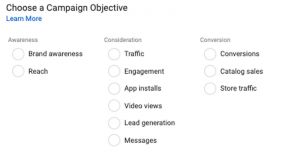While the only constant thing people go through in life is change, it has often proved to be uncomfortable. Incidentally, if you refuse to change, you can find it regrettable at the end of the day; the fundamental reason people are averse to any form of change is that change is disruptive.
This should not necessarily be so; the main problem brands encounter while embarking on change is due to the lack of a clear-cut change management strategy. There may even be the issue of some brands not knowing what change management is all about; while we may not want to completely believe that 70% of change management initiatives fail, it’s, all the same, frightening to conceive that we can even have high numbers of change management initiatives that fail.
The problem of failures may stem from organizations not knowing that change management is a holistic approach towards the preparation, support, help of teams, employees, and brands to effect change. Change management comes with a lot of financial implications and must be handled efficiently.
Before embarking on change management, you need to understand why you need the change in the first place. You may want to adopt new technologies, revamp legacy systems, respond to crises, improve customer experience, add more value to the organization, become more relevant in the market, acquire or merge with another brand, or embark on a general organizational overhauling.
There must be a purpose for change, knowing that employees have to go through some difficult times to adjust and adapt to the new changes as well as the financial involvement. All these can bring up some issues, so you just don’t embark on change because others are doing so, you must have a strategy to guide you on what you want to achieve, how you go about it, and when you intend to implement it.
Your change management strategy is the roadmap that will ease the tension and strain on employees, teams, partners, and the organization. It also helps to remove resistance as everybody will be on the same page about the steps to be taken.
You must understand that no two changes are the same, the strategy you employ to relocate office spaces may not necessarily work for changes in the C-suite or the acquisition of a company; your change management strategy must be specific for a particular kind of change. As these changes are different, so are the risks and challenges you will encounter, but a clear-cut strategy ensures you handle the risks and challenges before they become problematic and affect processes.
How to create a change management strategy
A change management strategy is not just a to-do list; you need serious planning with inputs from the CIO and other members of the C-suite. Changes often cut across departments, hence it can’t be the sole responsibility of the IT team or HR personnel, depending on the nature of the change.
Steps you need to create a wholesome management strategy include:
1. Define the features of the change
You should have candid answers to questions such as:
- Is the change going to be holistic?
- Is the change targeting customers, employees, or the organization?
- What is the number of people that the change will affect?
- What is the degree of impact on each person?
- What is the change going to do, adopt new technologies, change roles, or revamp legacy processes?
- How quickly will the change come into place?
If you have candid answers to these questions, you have a roadmap as to where you are heading.
2. A comprehensive understanding of your organization
A change management strategy must look critically at the organization; you must understand the type of organizational culture you operate along with the history. It’s with this hindsight you can describe the exact area you are targeting the change at.
The following questions will guide you through:
- Do your managers and employees have any need for the change you want to introduce?
- Have you implemented changes previously?
- If so, who managed the changes?
- Does your organization have a vision statement?
- How flexible is your organizational culture?
- Are you currently implementing any form of change in the organization?
If you have answers to these questions, you are set for the creation of a change management strategy.
To ensure your strategy is perfect, you must include the following:
Team structure
Since you don’t want to have difficulties among your project team and change management team, your team structure will specify who does what and the relationship between the different teams. To facilitate the change management work, you may need to have a change manager who will be a part of the project team.
The manager can even be a project team member who is assigned to oversee the change management work. This ensures collaboration among the different teams.
Resources can often be a source of friction, so your strategy will take cognizance of how to handle this very important aspect.
Effective sponsor coalition
In certain instances, a sponsor may not be enough to ensure an efficient change; in such situations, you may need to form a sponsor coalition from the leadership, managers, and other stakeholders who will play vital roles in enhancing the change. The main sponsor will, however, remain as the overall person to authorize and promote the change.
The main sponsor has to constitute this coalition from leaders who will positively impact employees, and ensure that they get all the subtle details and other necessary information needed to effect a smooth change. Since they will come from different groups, the main sponsor must ensure they are people who employees will look upon as responsible leaders.
A lot depends on the caliber of people in the sponsor coalition.
Proactiveness towards resistance and risks
Often, when organizations embark on change, there’s usually resistance from employees. This is mostly the case when organizations are proactive. Employees have some degree of fear about the change, especially when you have to scale down activities. Another reason for resistance from employees is the fear of going through training sessions. But, all these can be resolved if the employees are carried along from the onset.
To be proactive about flare-ups and resistance, you can prepare the ground by asking the following questions:
- Is there any group of employees that the change will affect the most?
- Do some people in the organization see things from a different angle?
- Do you have employees who believe this is the way we do things here?
- Is there any group that will pose a potential risk?
By identifying the angles you can get resistance from, you can plan ahead on how to tackle such issues when they crop up. You don’t have to start planning when the problem has already started, you kick-start your actions to take care of the situation.
If you fail to include in your strategy how to manage and support employees during the course of the change, they may pose risks. And knowing that some changes have a higher degree of risks means you can plan for them from the onset.
A change management strategy must have a section to handle overall risk and specific risk factors proactively.
Business & Finance Articles on Business 2 Community(34)





